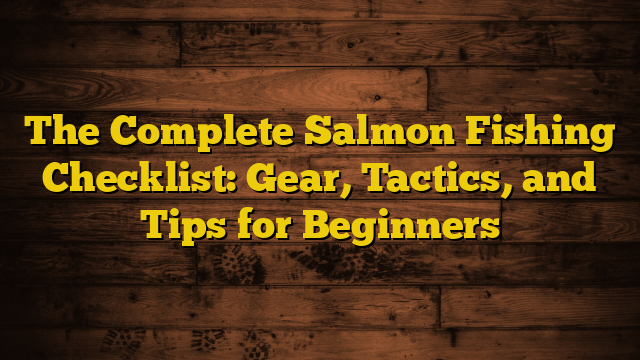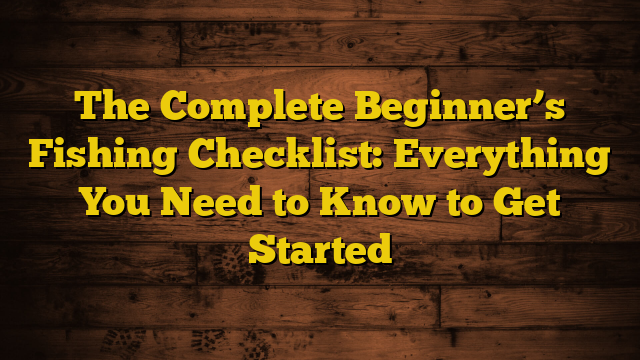Fishing in rivers and streams allows anglers to cast into moving waters that concentrate trout, bass, walleye, catfish and more into small areas. The currents add challenge and action compared to still lake fishing. Wade fishing a river or casting from shore puts you directly in the strike zone to hook hungry fish holding in rapids, pools, eddies and other prime spots.
With the proper river fishing gear, bait, rigging techniques and knowledge of promising spots, beginners can find great freshwater fishing success. Use this in-depth river fishing guide to learn everything from picking the optimal rivers to essential tackle and expert tips for how to hook fish in flowing waters.
Why Try Your Luck River Fishing?
Fishing in rivers, creeks and streams appeals to anglers for many great reasons:
- Fish concentrate around structure and in moving water habitats to feed
- Opportunity to catch diverse species like trout, bass, walleye, catfish and more all in one place
- Wade fishing allows getting right into the fishy spots and current seams
- Casting from shore is easy and accessible at public access points
- Moving water adds challenge and action to the fishing experience
- Peaceful, scenic surroundings away from crowds
The combination of cover, structure, current, gravel and rock bottoms, and constant food supply make rivers ideal habitats that draw in a variety of gamefish year round. Learning to read the water and fish these ideal lies will pay off.
Common River Species to Target
The fish species present will vary greatly based on the river location, size, depth, structure, water conditions and forage. But common catches when river fishing across North America include:
- Trout – Rainbow, brown, brook, cutthroat, lake trout
- Bass – Smallmouth bass, spotted bass, largemouth bass
- Walleye – Typically in larger rivers and tributaries of the Great Lakes
- Catfish – Channel catfish, blue catfish, flathead catfish
- Carp – Common in many rivers and fun to fight on lighter gear
- Panfish – Crappie, bluegill, yellow perch, rock bass
Research the productive species in your local rivers and tailor your approach accordingly. Also be prepared to catch and release other undesired species like northern pike or gar.
Prime Times to Target River Fishing Hot Spots
Timing your river fishing trips to coincide with the most active feeding windows will greatly improve your catch rates. In general, target the following conditions:
- Early morning around dawn and dusk when light is low
- During reliable insect hatches that trout gorge on
- When water levels are stable or on the rise – avoid heavily dropping dirty water after floods
- Following a light rain that washes additional food like worms into the river
- In spring and fall when water temperatures are in the 50-65°F comfort zone
- On overcast days or during light winds rather than bright sun and heavy winds
It always pays to monitor the weather, moon phase, flows, hatches and other conditions to determine the optimal times to be on the water.
Choosing the Best Rivers and Streams to Fish
To maximize your chances hooking fish, look for flowing waters with these ideal characteristics when possible:
- Clear, cool water in the 50-65°F range preferred by trout and bass
- Gravel, rocky or sandy bottom – the best gamefish habitat
- Sections of fast riffles and runs that transition into slow pools and deeper holes
- Some mellower sections that are easy to wade for accessing more spots
- Downed trees, boulders, islands, and logjams that create cover for ambush predators
- No extremely dangerous rapids or sections impossible to pass or fish safely
- Easily accessible public access points and wadable shorelines
Ask local bait shops which nearby rivers consistently produce good catches for species you’re targeting. Finding proven waters with optimal conditions saves trial and error.
River Fishing Tackle and Gear Checklist
Choosing the appropriate fishing tackle suited for moving waters and river species is key. Load up with these essentials:
Rods and Reels for River Fishing
- 5-7 foot ultralight or medium power spinning rods for casting artificial lures and drifting baits
- Baitcasting combo suitable for bass fishing with heavier jigs and crankbaits
- Reels with smooth drag and corrosion resistant materials
- 4-8 lb test monofilament or fluorocarbon line
Must-Have River Lures and Baits
- Small spinners like Rooster Tails, Panther Martins, Mepps for covering water and mimicking injured baitfish
- Shallow diving stickbaits, crankbaits, and jerkbaits that imitate forage
- Spoons, jigs tipped with live bait, soft plastic swimbaits for bass
- Dough bait, whole kernel corn for catfish and carp bottom fishing
- Nightcrawlers, salmon eggs, live minnows, grasshoppers for drift fishing
Terminal Tackle and Rigging Gear
- Light wire circle hooks, snell hooks, and aberdeen style hooks size 6-10
- Egg, bell and split shot weights to keep baits drifting near bottom structure
- Bobbers, floats, strike indicators to suspend baits
- Slim snap swivels for lure fishing
- 4-6 lb fluorocarbon leaders for wary trout
Other River Fishing Equipment Essentials
- Polarized sunglasses – spot fish in glare and reflections
- Breathable waders or wading boots with studs/cleats for traction
- Waterproof box or bags keep gear dry when wading
- Small tackle backpack or vest to carry tackle
- Net suitable for landing trout, bass, panfish
- Line clippers, hook remover, needle nose pliers, tape measure
With full tackle boxes and the right rods, you’ll have all the tools needed to adapt strategies and bait for the conditions and species present.
Top River Fishing Techniques and Tips
Follow these expert tips from seasoned river anglers for improving your odds of success on the water:
- Wade carefully and quietly to avoid spooking fish in shallow water
- Cast upstream at a 45 degree angle and let bait/lures drift into holes and structure
- Target prime holding spots like current seams, submerged boulders, eddies behind rocks
- Set drag light to avoid pulling hooks from soft fish mouths when they strike
- Add enough weight above your bait to keep it down near bottom in faster currents
- Make hook sets smoothly and keep rod low to prevent “bowing” light line
- Use natural colored baits and lighter line/leaders for clear water wary trout
- Upon any hits, let fish run a bit before setting hook to ensure solid contact
- Bring needle-nose pliers to remove treble hooks when releasing fish
- Follow regulations and handle fish with care for healthy catch and release
Matching your tactics to the river conditions each day will help you consistently find success on the water.
Rules and Regulations to Know Before River Fishing
Always research the following before wetting a line on new flowing waters:
- Purchase the required freshwater fishing license for your state
- Note any special regulations on gear, bait, size/bag limits for that river specifically
- Learn restricted access areas, seasons, catch and release sections
- Pick up trash left behind by less considerate anglers
- Practice responsible catch and release fishing to preserve fisheries
River fishing lets anglers reach trophy trout, hard fighting bass and catfish, acrobatic steelhead and more in scenic settings. Follow this guide and get geared up to catch your own river monsters. The pulling power of freshwater species in flowing rivers is an incredible experience every angler should try.







